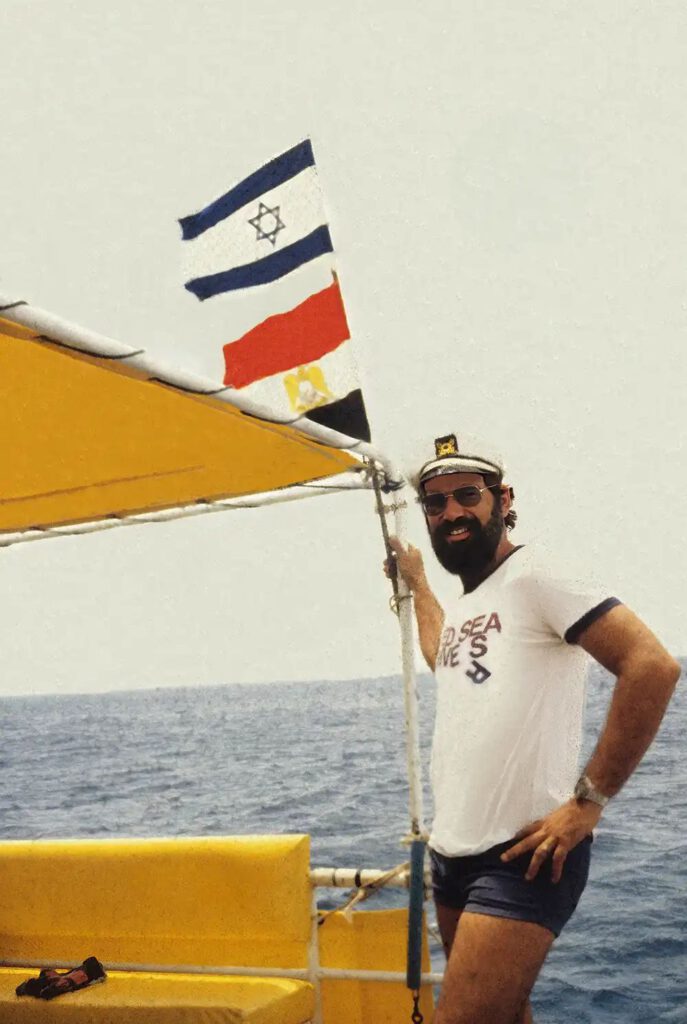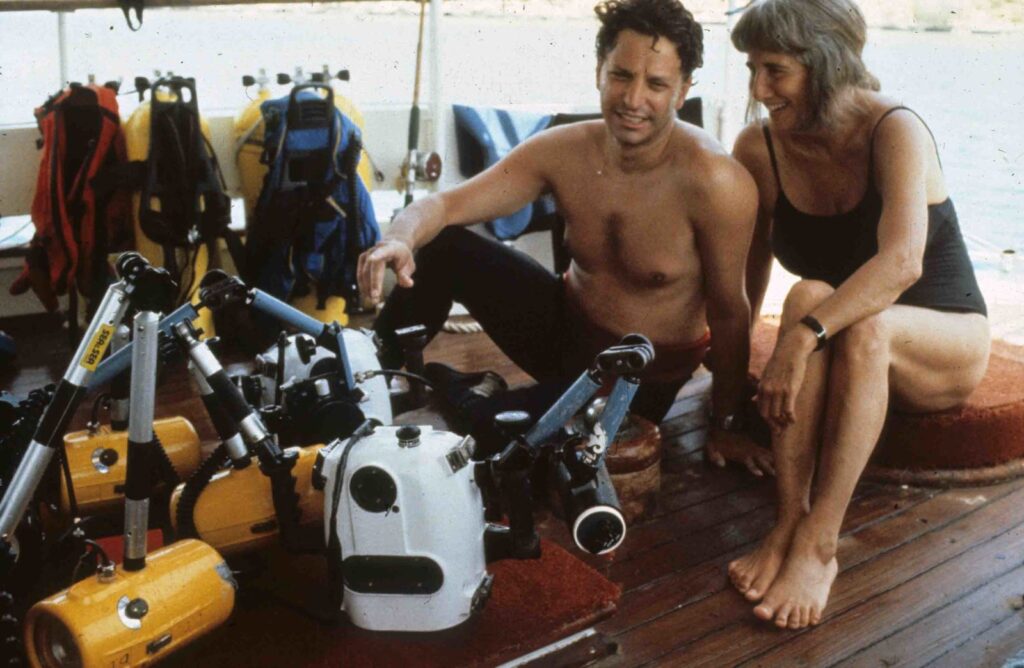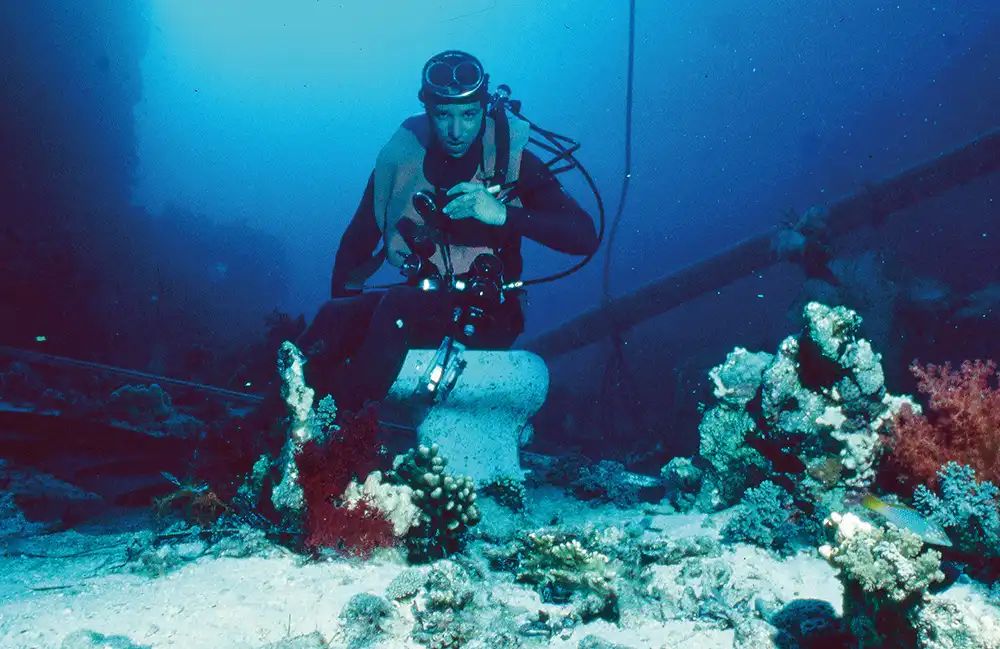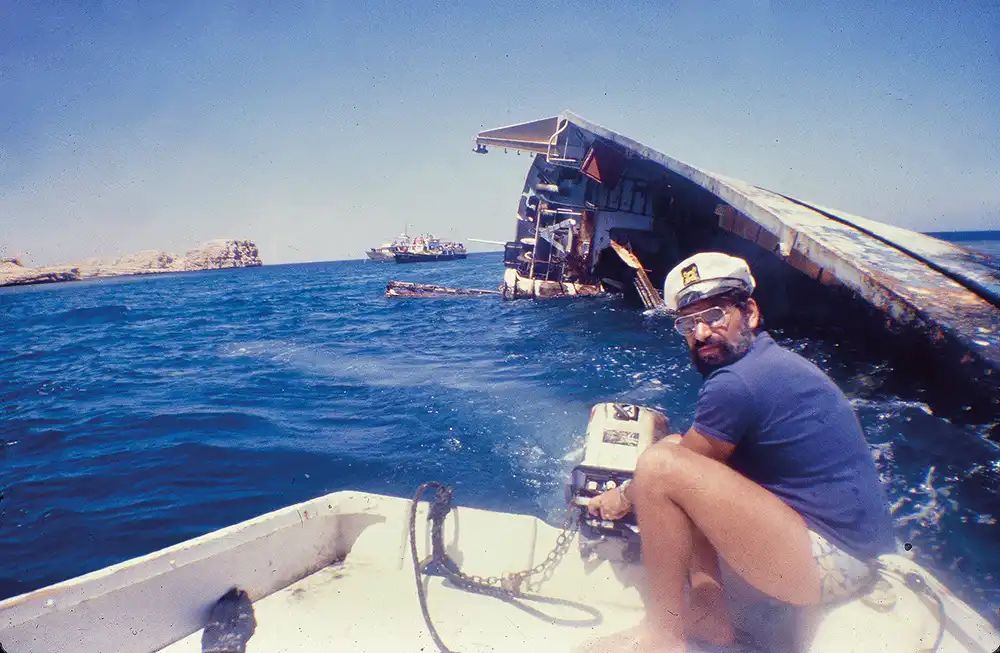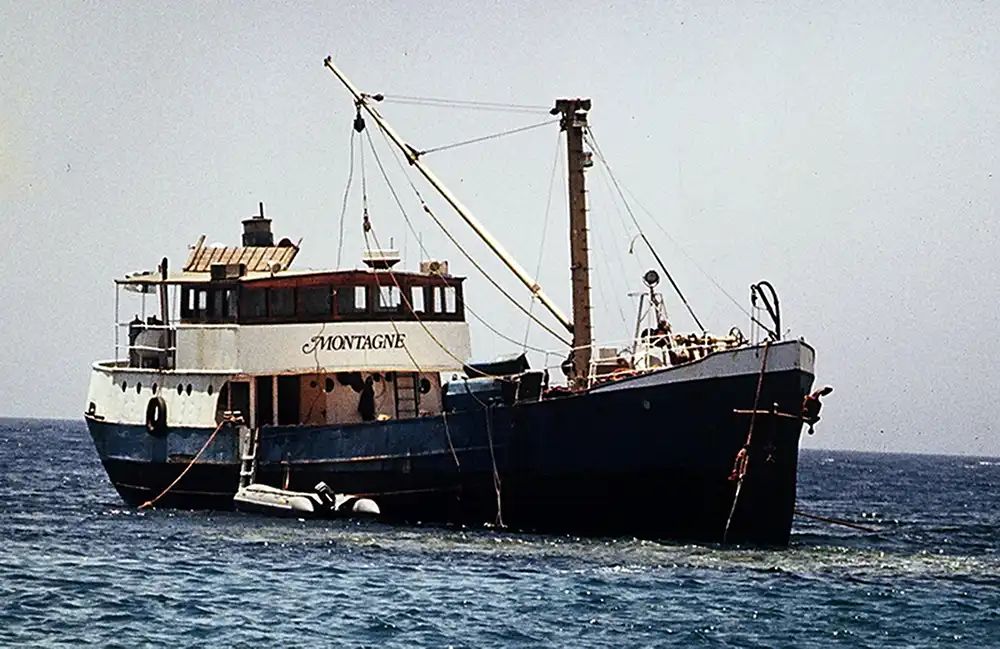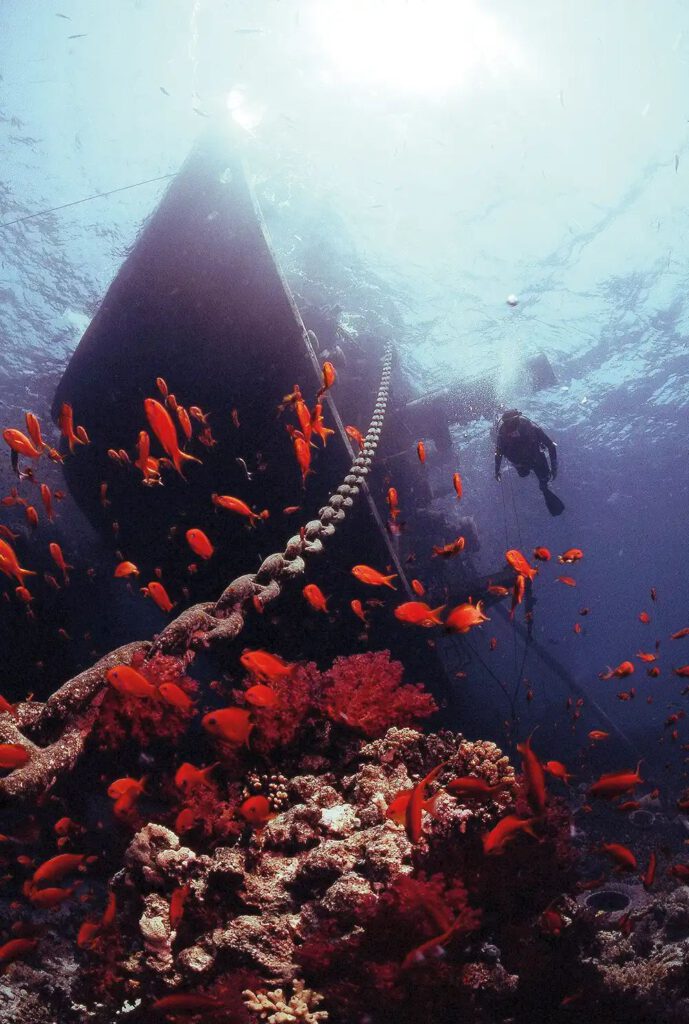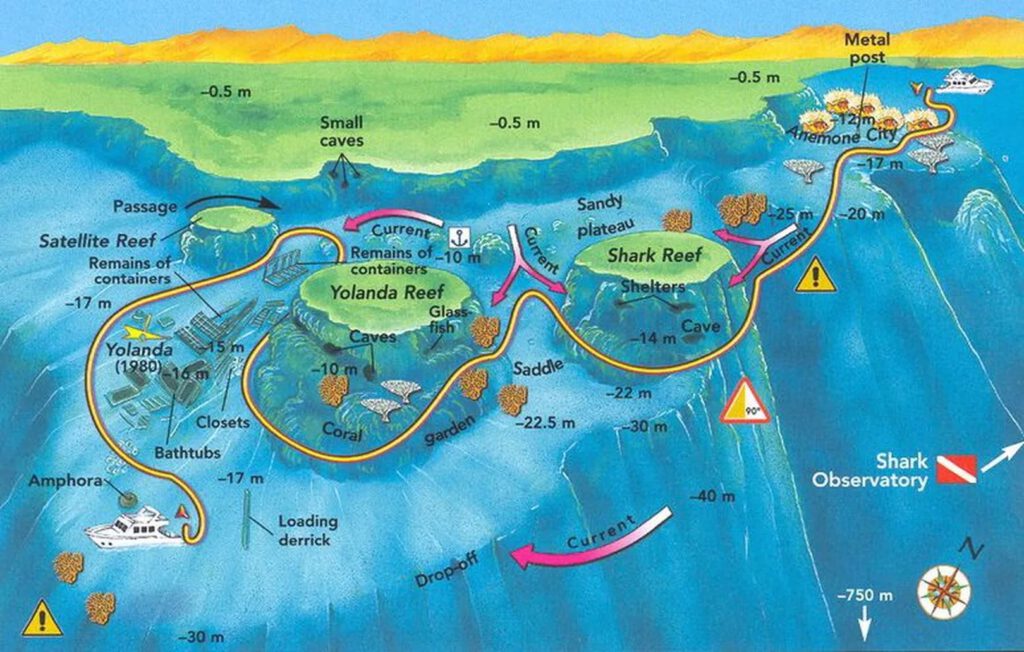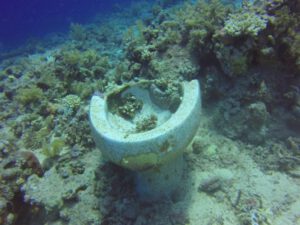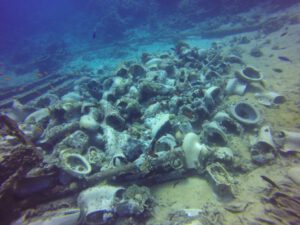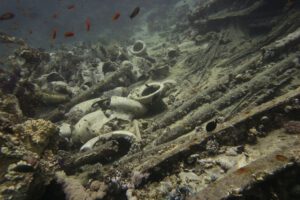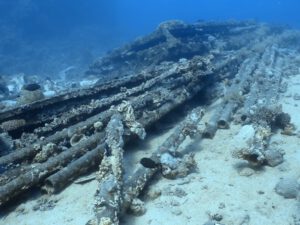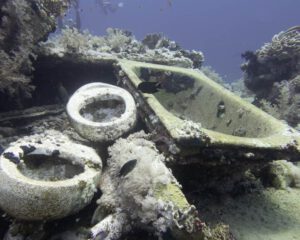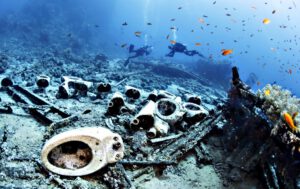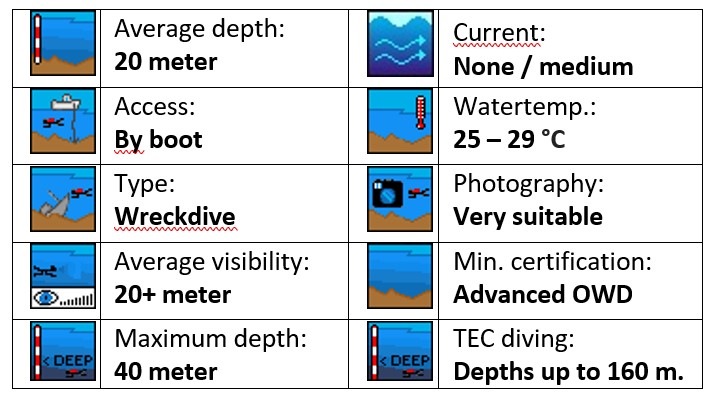MV Jolanda (Yolanda)
(Sharm el Sheikh - Egypt)
The ship Yolanda carried toilets, bath tubs, pipes etc. when it hit the reef in 1980.
The wreck slided down the reef to 160m in 1985.
The cargo is still in shallow water (10-15m).
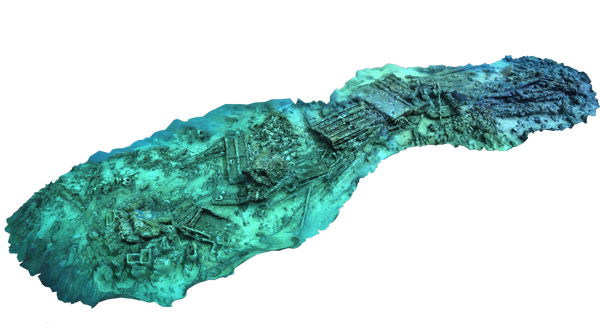
MV Jolanda (Sharm el Sheikh - Egypt)
The Jolanda (often misspelled as Yolanda), a 1,153 GRT Cargo Ship constructed in Spain, launched in 1963, and initially registered under the South African flag, later registered in Cyprus, sank near Ras Mohamed National Park on April 1, 1980.
Carrying ceramics, aluminum, general cargo, and a BMW 320, it grounded on a reef and remained stuck for four days before rolling onto its port side and eventually sinking, leaving remnants of its cargo and the car. Over time, it gradually capsized before sliding into deeper waters in 1985.
The wreck now rests between 10 and 25 meters at “Yolanda” Reef, known for recreational diving in Sharm El Sheikh.
The site offers a dive route from Shark Reef to Yolanda Reef, showcasing remnants of the ship’s cargo.
The wreck lies about 160 meters below the reef’s ledge and was discovered in 2005 by deep divers Leigh Cunningham and Mark Andrews, with subsequent explorations in 2007 setting a world record for the deepest female scuba dive.
NOTE: We make use of “Sketchfab” click HERE to view the navigation controls
Click on the 3D model below to move it around
All credits to the above Photogrammetry model goes out to Holger Buss
The story & the dive
The data
- Name: MV Jolanda (1977 – 1980)
- Type : Cargo ship
- Nationality: cypriot
- Last owner: Sea Brother Marine Shipping Co.
- Builder: Juliana Constructora Gijonesa (Spain)
- Propulsion: motor vessel (diesel)
- Date built: 1964
- Tonnage: 1176 grt.
- Dimensions: 74.7 x 10.7 x 5.8 (m)
- Material: steel engine: 1 diesel engine, single shaft, 1 screw
- yard no.: 135
- IMO/Off. no.: 5405645
- Date of the wreckage : 01/04/1980
- Current location: 27’43.300N, 34’15.000E
- Depth : 12 – 160 meter
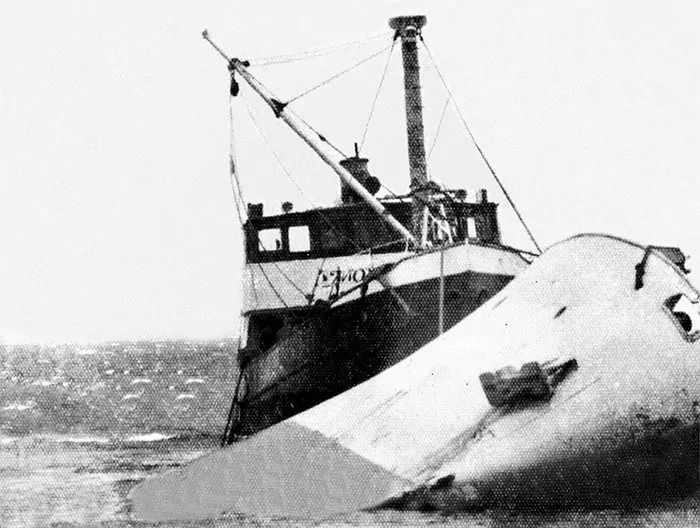
The MV Jolanda with the Salvage vessel “Montaigne”
The story
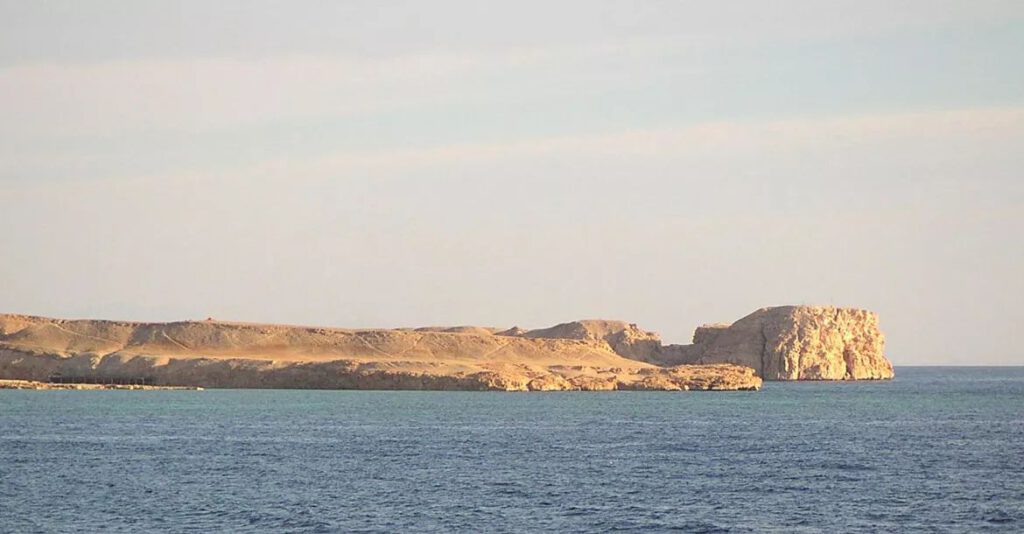
Yolanda Bay
The MV Jolanda was on a voyage from Piraeus to Aqaba with a general cargo including toilets, wash basins, bath tubs, a BMW 320 car (apparently belonging to the captain), aluminium, plastic sheeting and several containers of general goods.
During a bad storm on April 1st 1980 the ship got caught on one of the southern reef mounts at the tip of the Ras Mohamed peninsula. (The story goes that the crew was drunk at this time, but this has never been proven or confirmed)
After 4 days aground she rolled over onto her port side, her bow awash, and with her stern hanging over the abyss.
The wreck remained in that position for several years, slowly toppling over until it was totally upside down.
Then one day in 1985 the hawse wire holding it snapped and a great wreck was lost as it slid down the reef leaving behind only evidence of its cargo; baths, toilets and a car.
Much more famous in its de mise than during its sea-faring days, a reef, beach and bay were named after this ship where it sank.
All named after the wreck, but spelt incorrectly…
The eyewitness
The following story is an extract from the book “Treasures, Shipwrecks And The Dawn Of Red Sea Diving”, in which Red Sea scuba diving pioneer Howard Rosenstein details what happened the day one of Egypt’s most famous wrecks struck a Ras Mohammed Reef.
As a pioneer of Red Sea diving, Rosenstein was one of the first people to dive at sites that many of us know and love today. He was part of a team that discovered the wreck of Dunraven, and the first person to dive the wreck of Jolanda (it really is a J, not a Y!) when it struck Shark Reef in 1980.
In 1966, a 19-year-old student by the name of Howard Rosenstein travelled from Los Angeles to Israel during a summer break from college, and on a whim decided to try snorkelling.
Captivated by the beauty of the underwater world, in 1970 – just six months after getting his basic NAUI certification – he started a dive operation on Israel’s Mediterranean coast, later expanding it to Nuweiba on the Sinai Peninsula before moving to Sharm El Sheikh in an area otherwise inhabited only by seasonal Bedouin encampments, and the site of a UN Peacekeeping base.
By 1974 he was hosting National Geographic photographer David Doubilet and his wife Anne, together with Eugenie ‘Shark Lady’ Clark. Their resulting September 1975 cover story highlighted Ras Mohammed as a wonder of the scuba diving world; a place for which Rosenstein would later engage in ‘diving diplomacy’ with the Egyptian authorities to persuade the government to designate the reefs a protected area – which it eventually did.
As a pioneer of Red Sea diving, Rosenstein was one of the first people to dive at sites that many of us know and love today. He was part of a team that discovered the wreck of Dunraven, and the first person to dive the wreck of Jolanda (it really is a J, not a Y!) when it struck Shark Reef in 1980.
On 1 April, 1980, a Cypriot coastal freighter, the Jolanda, went aground at Ras Mohammed.
The Israeli Navy tipped me off on the morning of the accident.
Standing in my front yard, I saw the stranded ship through my binoculars. I was anxious to get our dive team there to survey the damage and assess how it could be contained, but we first needed permission from the Egyptian authorities.
I called my friend and scuba diving student Samuel W Lewis, the American ambassador to Israel. Whenever he could, Sam – as he asked us to call him – would break away from his responsibilities to dive with us in Sharm El Sheikh.
In response to my request for help, he contacted the US Embassy in Cairo. Within twenty-four hours, Egypt gave us the go-ahead. I gathered my team members and took a dive boat to the scene the next morning.
Reefs are built by colonies of soft and hard corals so fragile that they can break at the swipe of a diver’s fin. Launched in 1964, Jolanda was seventy-five metres long, eleven metres wide – a 1,153-ton freight ship complete with cargo – and it was wedged atop the northern coral island at Ras Mohammed’s Shark Reef.
Its captain compounded the damage when he tried to dislodge the vessel at high tide. Yet more corals were destroyed when the ship dropped its large anchor on the shallow sea bed. Jolanda (pronounced Yolanda) came to rest on her port side in the shallows, but precariously positioned above a steep drop-off into the abyss.
A bizarre array of cargo was strewn about the seabed: from containers filled with industrial plastic sheeting, to porcelain toilets, to a new BMW stuck head-down on the reef.
When we arrived, a salvage vessel, the Montagne, had already dropped anchor atop a beautiful coral head that must have taken centuries to reach its size and majesty. Salvage operators are paid based on what they retrieve, a ‘no cure, no pay’ agreement. As they let loose their chains and ropes, reef preservation is the furthest thing from their minds.
The salvage was causing further severe damage to the fragile coral ecosystem. It was an acute ecological disaster.
I photographed the scene above and below water, documenting the damage to the reef. Back at the dive centre, I notified the American Embassy in Tel Aviv about the disaster in the making. My mission shifted from getting dive access to Ras Mohammed, to saving the natural wonder.
Top US diplomats swung into action – Ambassador Lewis in Tel Aviv, Ambassador Alfred ‘Roy’ Atherton in Cairo and Ambassador in Jordan, Nick Veliotes. Egypt halted the salvage operation within days.
The Swedish captain of the Montagne, a huge guy, was angered by our interference, to the point of threatening my life. I first encountered him when I came up from my initial dive. Towering over me, in an inflatable boat, he asked me what I was doing on his wreck.
When he revved his outboard engine ominously in my direction, I quickly dove back down and navigated at depth toward the safety of our boat on the other side of the reef. At one point, the captain warned me of physical harm if I returned to the wreck site.
After the Egyptian authorities expelled him from the Jolanda wreck site, the Montagne’s captain decided to see what he could salvage from the nearby Dunraven, the century-old sunken wreck we had discovered three years before.
Leaving the Montagne anchored above, he dived into the wreck, never to be seen again….
Ironically, the Israeli and Egyptian authorities enlisted me to search for his body just days after he had threatened my life.
I combed Dunraven’s maze of silt-filled passageways, cabins, communal areas and cargo holds, to no avail. Perhaps the captain had become stuck trying to squeeze through a narrow passage. Another possibility is that he had become disoriented in the upside-down ship and had run out of air, trying to find his way out.
The disappearance....
The ship came to rest on her port side in shallow water. She was balanced precariously above a very steep drop-off.
In 1986, British diver and author Lawson Wood took his family to Egypt intent on showing his children this particular shipwreck.
As they approached the site, however, the sea became so rough they were unable to locate the mooring line attached to the wreck.
Consequently, they moored elsewhere.
That night, a violent storm dislodged the Jolanda which slipped off the reef into very deep water.
Lawson and his children had a very narrow escape.
The ship itself has now been discovered at a depth of 160 meter.
The wreck was not accessed again until technical divers reached it in 2005. Among the remnants in the shallows are a few of the toilets, which still attract divers eager to pose for underwater photos on the coral-encrusted thrones.
The (re) discovery
The Jolanda project
The actual wreck was discovered in 2005 by deep divers Leigh Cunningham and Mark Andrews during their ‘Jolanda 160 project’.
After several attempts, Leigh Cunningham and Mark Andrews found the wreck of the Jolanda, broken into two sections.
In the summer they discovered the bow which came into view at 130m and sat between 145m – 160m.
Leigh and Mark did not stop there. On 9 December 2005 they dropped down on the stern section, the deepest part being at 205m. They had just completed the deepest dive made on a sunken shipwreck using open circuit scuba.
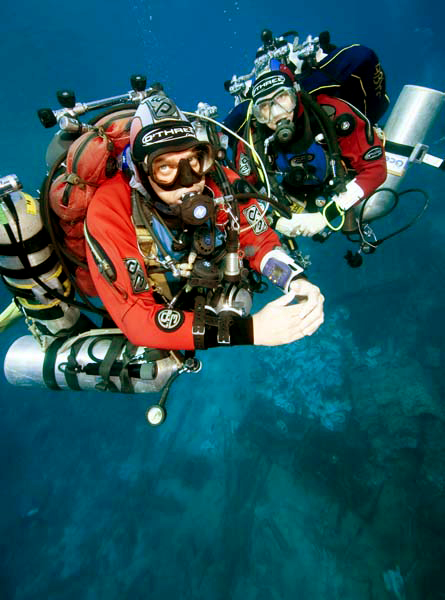
Leigh Cunningham and Mark Andrews
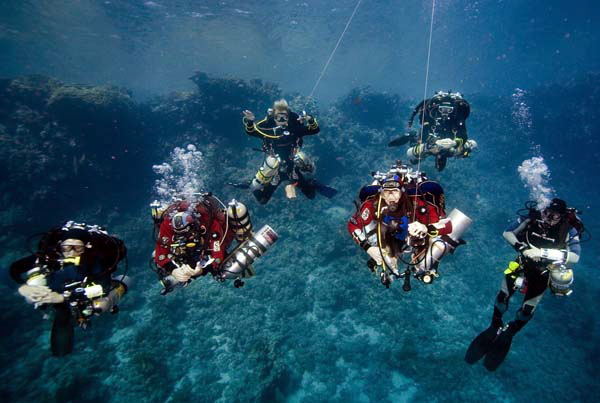
Leigh and Mark with support team
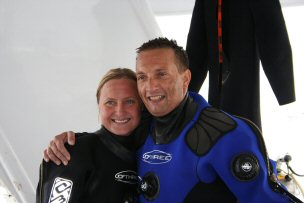
Nina Preisner and Neil Black
Leigh Cunningham and Mark Andrews are British technical divers who made headlines for their record-breaking dive to the wreck of the Jolande in the Red Sea. They achieved a depth of 205 meters (672 feet), claiming the title for the deepest wreck dive ever. This dive required extensive preparation, including acclimatization dives, and involved a team of support divers and standby rescue services.
The Jolanda 160 Project aimed to complete a safe and successful dive to a depth of 160 metres on the wreckage of the Jolanda. The objective was to get the first footage of the Jolanda at depth since it sunk from it’s initial shallow resting place to 150 meter.
World’s deepest wreck dive
MV Jolanda, where did she go?
Above some publications of Mark Andrews (Click to view the publications)
Ocean Tec instructor Nina Preisner set a new world record. During he ‘Jolanda project’she became the deepest woman wreck diver on open circuit scuba.
She glided comfortably down through the blue to settle on the bow of the Jolanda at a depth of 159.8 metres, extending the current women’s record by 15 metres.
Carrying 6 tanks of various breathing gasses and accompanied by Neil Black, she spent 4 minutes on the sunken deck of the stricken vessel during a dive that lasted 157 minutes, most of which was spent decompressing.
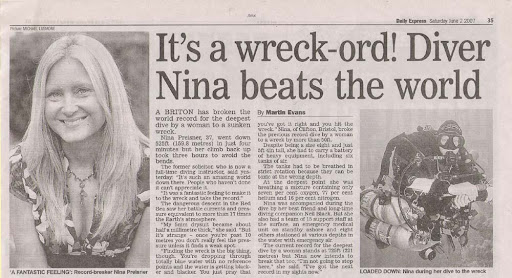
(Low quality) video of Nina Preisner’s world record
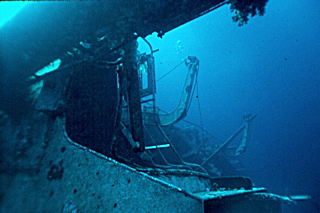
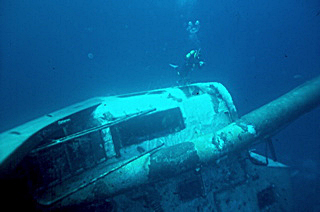
Actual pictures of the wreck at 160 meter.
The dive
Yolanda reef is one of the most famous site in Ras Mohammed.
There are many ways to dive the site so there is something for everyone here. Shark Reef, Yolanda Reef, and Satellite Reef make up the 3 pinnacles.
On Yolanda Reef you can find toilets and a mast laying around from the sunken Yolanda wreck.
Outside the reefs you can find big schools of batfish, barracudas, snappers, jacks, and much more.
Inside the reef you can find cleaning stations and many rays and turtles.
Yolanda Reef is a rich coral garden in Ras Mohammed.
Shark and Yolanda reef are mostly dived in 1 dive.
From the surface it forms a plateau from 12 to 20m.
Many small pinnacles with colourful soft corals and abundant marine life can be found on the plateau.
Ever since the Jolanda crashed on the reef its cargo still lies in shallow water.
The Yolanda was carrying mainly sanitary fixtures, bathtubs, toilets and even an old BMW, now all encrusted with corals and home to Blue Spotted Stingrays, Scorpion and Stone Fish, Giant Morays and the resident Napoleon Wrasse.
Conclusion
Besides the wrecks there is enoughflora and fauna to admire.
The ‘standard’ Red Sea inhabitants are all present, think of groupers, triggerfish, bannerfish, moray eels and lionfish.
There is also a variaty of hard corals around.
However the main attraction is the wreck.
This dive is most of the times combined in one dive togheter with ‘Shark reef’
It’s an easy but deep dive. There can also be a fair current now and then, keep this in mind.



